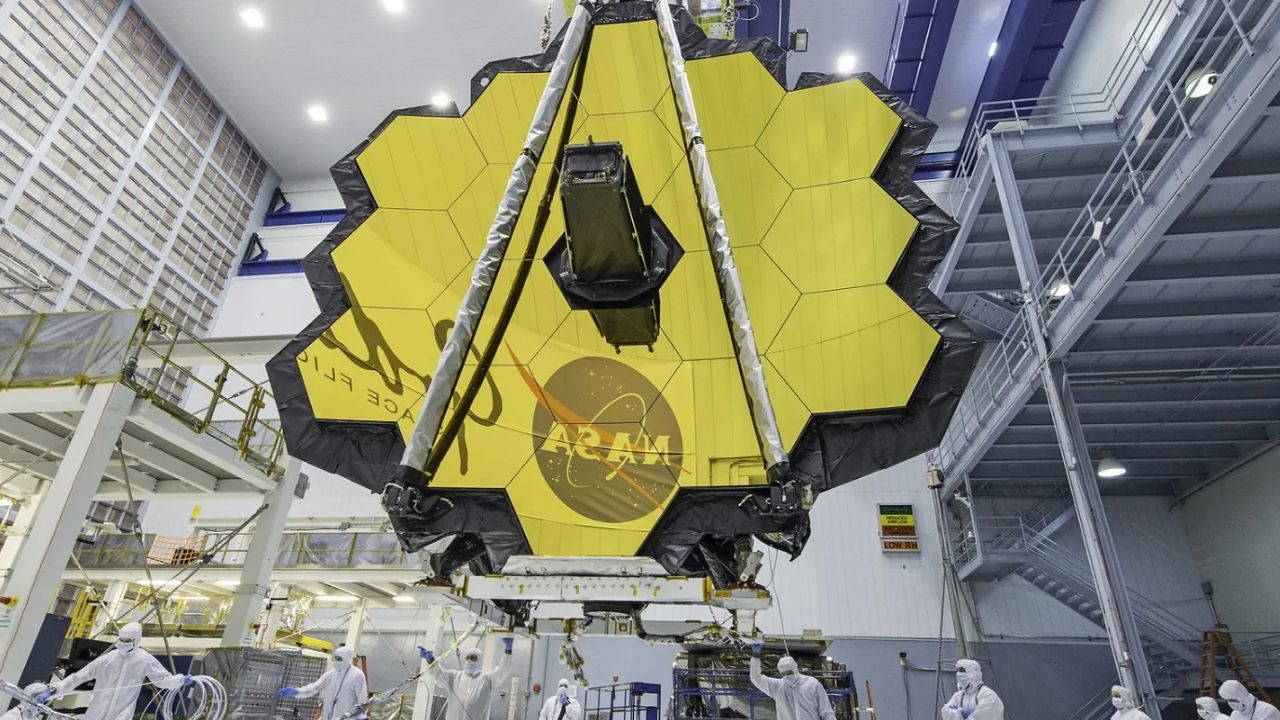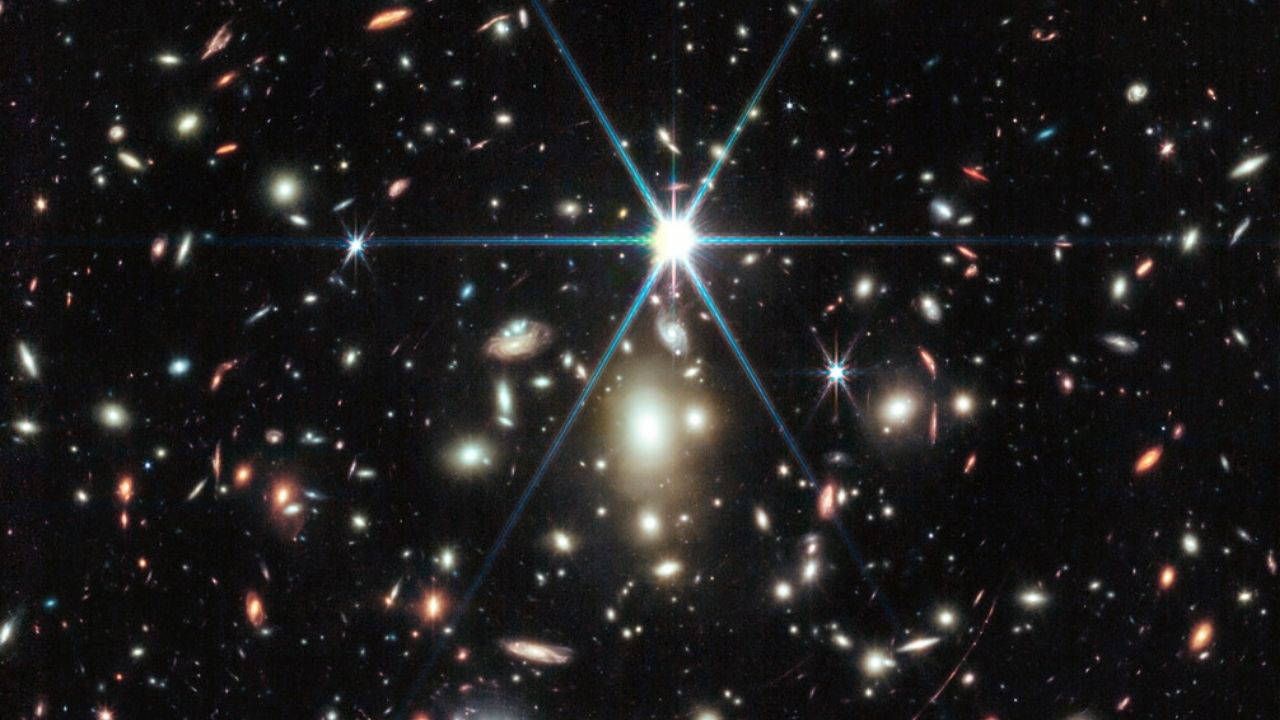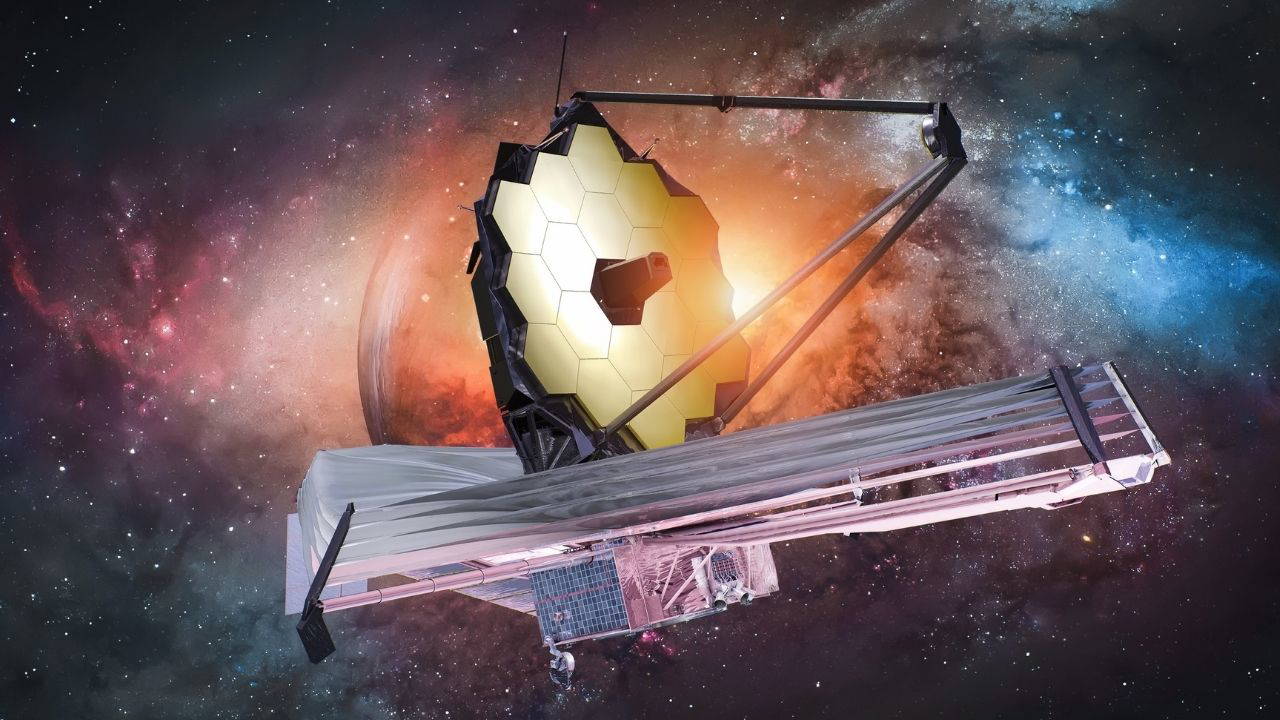The James Webb Space Telescope sheds light on the universe's unknowns

JWST conducts multifaceted research on the first stars and galaxies formed after the Big Bang, especially the Solar System and the Milky Way Galaxy, as well as exoplanets and celestial bodies that may harbor life.
In this context, JWST continues to make groundbreaking discoveries by shedding light on the early universe with the full-color images and spectroscopic data it has published since its launch into space in 2021.
Operating away from the influence of the Earth's atmosphere, JWST obtains high-resolution images of the universe thanks to its cameras working with visible and infrared light.
The clearest image of the universe was obtainedApproximately seven months after JWST's launch, the most detailed and clear full-color photograph of the universe ever taken, including galaxies billions of light-years away from Earth, was obtained.
While the sharing of the photo was followed with interest around the world and in the USA, this step showed that James Webb was able to achieve his first goal.
The first photo shared by the telescope revealed distant galaxies from the period 13.1 billion years after the "Big Bang," and this area was named "SMACS 0723 Deep Field."

Experts commented that the photo shows the Volans constellation, where multiple galaxies are gathered in the Southern Hemisphere region.
While hundreds of galaxies are included in the image, important clues about the structure of the early universe were obtained by examining the redshift values of these galaxies.
The most distant blue galaxy in the universe has been discoveredWhile the door continues to be opened to new discoveries thanks to the superior imaging power of JWST, the galaxy named "JADES-GS-z14-0", dating back approximately 300 million years after the Big Bang, was observed.
The most distant galaxy detected so far, JADES-GS-z14-0, has a mass about 400 million times that of the Sun.
As galaxies grow over time, dust is created by the explosion of stars, and this dust absorbs blue light, making galaxies appear red. However, the blue, bright, and large size of this galaxy detected by JWST caught scientists' attention.
Unexpected elements in early galaxiesWhile the early universe was known to contain only hydrogen, helium, and small amounts of lithium, analyses with JWST's infrared spectrometer (NIRSpec) have shown that some galaxies contain more nitrogen than the Sun, as well as the elements helium, neon, and carbon.
This chemical diversity in the Universe has been interpreted as indicating that the current knowledge regarding the evolutionary process of galaxies may be insufficient.
Dimmest galaxies observed with "gravitational lensing"By taking advantage of the "gravitational lensing" effect created by giant galaxy clusters, JWST has the capacity to detect faint galaxies in the early universe.
The telescope captured a massive star called Earendel through the lensing effect of the galaxy cluster " WHL0137-08 ." This star, twice as hot as the Sun and about 1 million times brighter, has been dated to 1 billion years after the Big Bang.

On the other hand, JWST contributed to the revision of theories of galaxy evolution by imaging the rare structure called the "Cosmic Owl", formed by two colliding ring galaxies approximately 11 billion light-years away.
Mysterious structures in red dotsIn the images recorded by JWST, which sheds light on new unknowns about the universe every day, many "small, bright red dots" were identified in the early universe.
Initially thought to be large galaxy clusters, these structures were revealed to be hydrogen gas orbiting a supermassive black hole and emitting light at high speed.
While the fact that these points exhibit features of both star clusters and active galaxy nuclei has led to discussions of different scenarios in the scientific world, some researchers think that these structures could be star clusters transforming into galaxy nuclei.
The research may also provide new clues about the birth and evolution of black holes, as well as star formation.
JWST also uncovered "galaxy corpses" in the early universeThe telescope has discovered what are known as "galaxy corpses," remnants of a period of active star formation in the early universe that has ceased producing stars. This provides scientists with crucial data to understand how quickly galaxies fade.
Current theories of galaxy formation cannot explain how galaxies the size of the Milky Way formed over a period of 700 million years. This has led scientists to develop new models that could explain the formation of giant galaxies at earlier ages.
Additionally, as some galaxies began to fade away in a very short time, the role of "dark matter" in this process began to be discussed.
An exoplanet was discovered for the first timeThe telescope, which continues to open doors to scientific innovation, discovered its first exoplanet in 2025, proving that it can detect lighter, more elusive planets orbiting distant stars.
NASA noted that the exoplanet orbiting the star "TWA 7", which is 34 light-years away, is about the size of Saturn.
Light activity on Neptune captured for the first time
NASA announced on March 26 that JWST has captured for the first time the movement of light on the planet Neptune, called "auroral activity."

By examining data obtained with the Webb telescope's Near Infrared Spectrograph in June 2023, astronomers detected the "trihydrogen cation" component that appears in light movements called "auroral activities" for the first time.
It was stated that the detection of Neptune's auroral activities will provide insight into how the planet's magnetic field interacts with celestial bodies traveling away from the Sun and "opens a new window" in the field of science that studies the atmospheres of Uranus and Neptune, known as ice giant planets.
The Webb telescope has imaged carbon dioxide in the atmosphere of an extrasolar planet for the first time.
JWST has obtained the first images of carbon dioxide detected in the atmosphere of an extrasolar planet.
Scientists have observed the multi-planet system "HR 8799" at a distance of 130 light-years, a long-time target for planet formation research.
Researchers using James Webb's coronagraph device, which studies distant planets around stars, have obtained images of carbon dioxide in the atmosphere of a planet outside the solar system.
The findings provide strong evidence that the four giant planets of the approximately 30-million-year-old system, like Jupiter and Saturn, slowly formed solid cores.
Cumhuriyet





